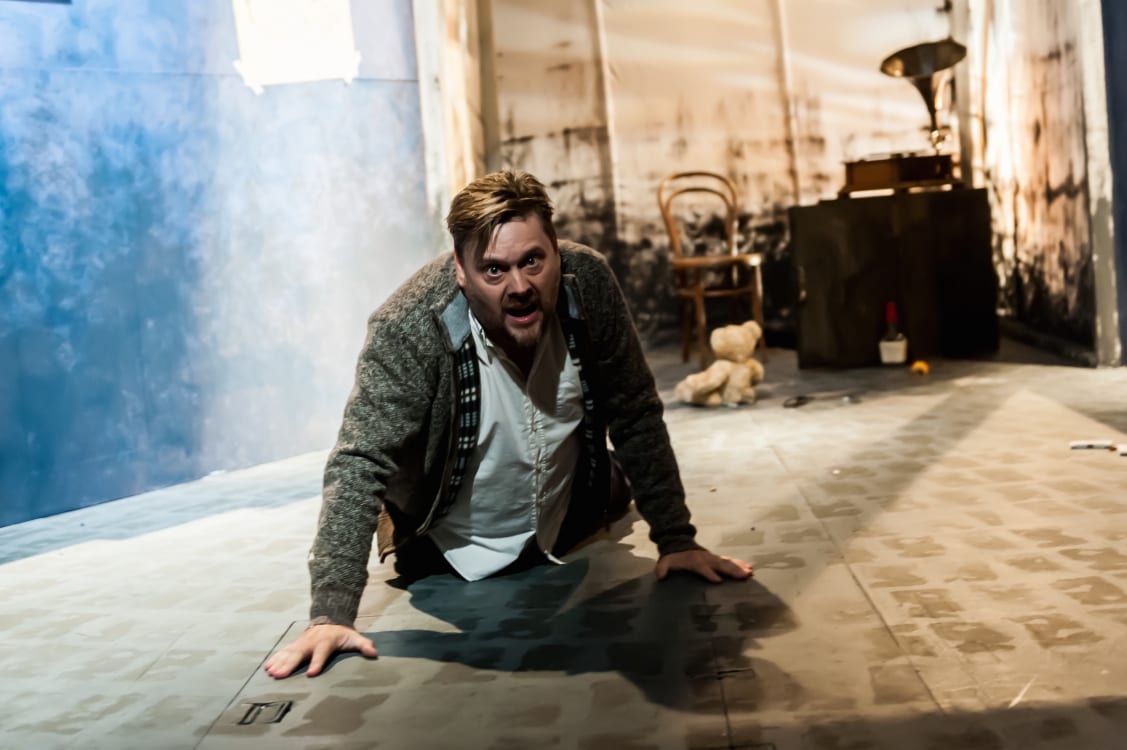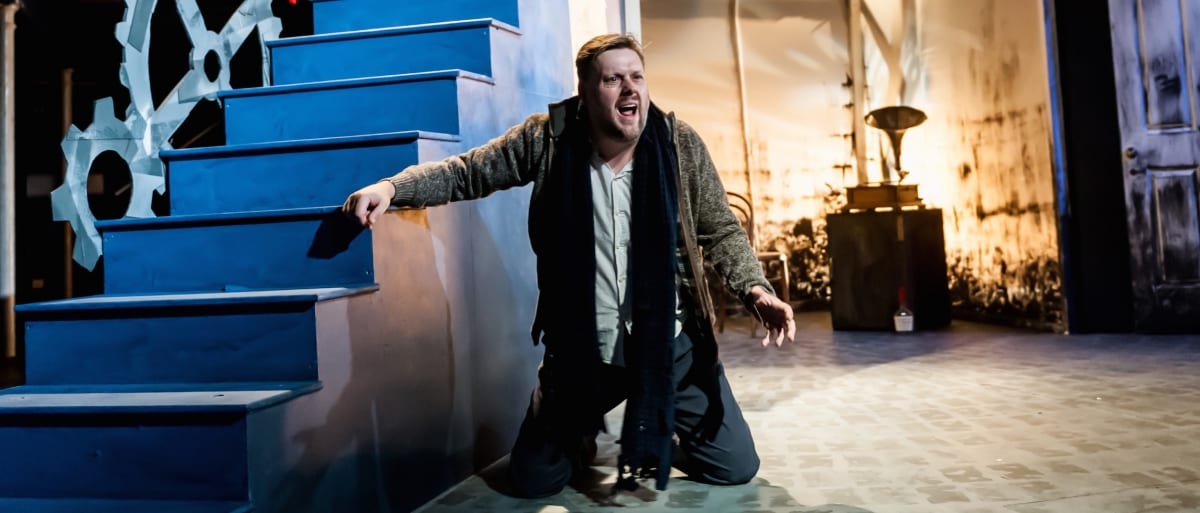Treatments of the Faust story abound in many languages, musical and literary formats. It is a bold and brave endeavour on the part of composer Simone Spagnolo and librettist Gordano Trischitta to add to the number; but this new work, the culmination of this year’s ‘Opera in the City’ Festival, is a notable success that will repay repeated listening and deserve further outings.
This take on the legend is an introversion of it – a monologue in nine scenes performed by the baritone Benjamin Bevan accompanied by a chamber quartet conducted by the composer. Instead of Faust’s customary exotic travels alongside Mephistopheles and in search of Marguerite we find ourselves in the company of a disorientated man, inhabiting a bleak hut in the Canadian snowfields, who has lost any clear sense of who he is. Fragments of his identity and life history return as the action proceeds, and events are relived and re-enacted, but this is very much the perspective of a broken man looking back, not an arrogant intellectual receiving condign punishment by conventional moral forces for defying God with a transgressive pact.
There are advantages and disadvantages to this approach. We don’t feel the force of temptation and the elation of kicking over the traces as you do in the versions by – say – Marlowe or Berlioz, and you miss the other characters; but you do get a much more human and richly three-dimensional portrayal of the man himself. It is a rare moment of insight to take the point of departure from where most accounts leave off and represent Faust in broken retrospect. This stance is somehow richer than simply offering an adventure story narrative where we already all know the ending. Trischitta’s libretto is wordy, but also dryly witty and pithy in formulation, fitting the music with ease.

We have here a performance of rare power and stamina by baritone Benjamin Bevan, who sings more or less continuously for the length of the piece, barring some few instrumental interludes. He is a more than plausible actor well capable of the extremes of mood, ranging from anguish to elation, that the role requires; and very much on top of the harsh vocal demands and the large amount of separately spoken text that breaks up the scenes. At times the role seems reminiscent in theme and vocal writing of Peter Grimes – the individual pitted against an uncomprehending world to which he is tragically unsuited – but with more mordant self-consciousness than that Suffolk fisherman knew.
Musically we experience a journey of many and varied moods, timbres and textures. It represents a large leap forward by composer Simone Spagnolo from his impressive but more modestly construed two-hander from last year’s festival. He has chosen an intriguing instrumental palette – violin, cello, clarinet/saxophone and xylophone with assorted percussion. These are deployed in different combinations, sometimes as a meditative underscore for Faust’s voyage of self-rediscovery, but also in independent interludes of commentary that at times remind you of Aaron Copland’s wide-spaced instrumental vistas. Occasionally the rhythmic devices and elaborate syncopations become a bit repetitive, but it could be argued in justification that this is only a reflection of Faust’s obsessive search to reassemble his identity.
In a monologue it is always important to have plenty of dynamic movement and a set that only gradually reveals its layers, so as to sustain visual interest. Director Pamela Schermann keeps things moving around deftly, and Cindy Lin’s set makes clever use of the steps deployed in the festival’s other main production to create a mysterious structure whose meaning is only gradually revealed as Faust searches for his version of ‘the eternal feminine’. Petr Vocka’s lighting scheme provides apt punctuation, both reflecting Faust’s mood changes and also shadowing the events of his life as they are recalled.
There is a lot to respond to here both in the music and text, and in their delivery. Certainly this reviewer can only give a set of first impressions and it is to be hoped that further acquaintance with this work’s rich resources will reveal the lineaments of these variations on an old theme with greater clarity. All in all this work is a vindication of the vitality both of contemporary opera but also the rich rewards that still remain to be found in exploration of familiar cultural tropes, traditions and mythologies.

